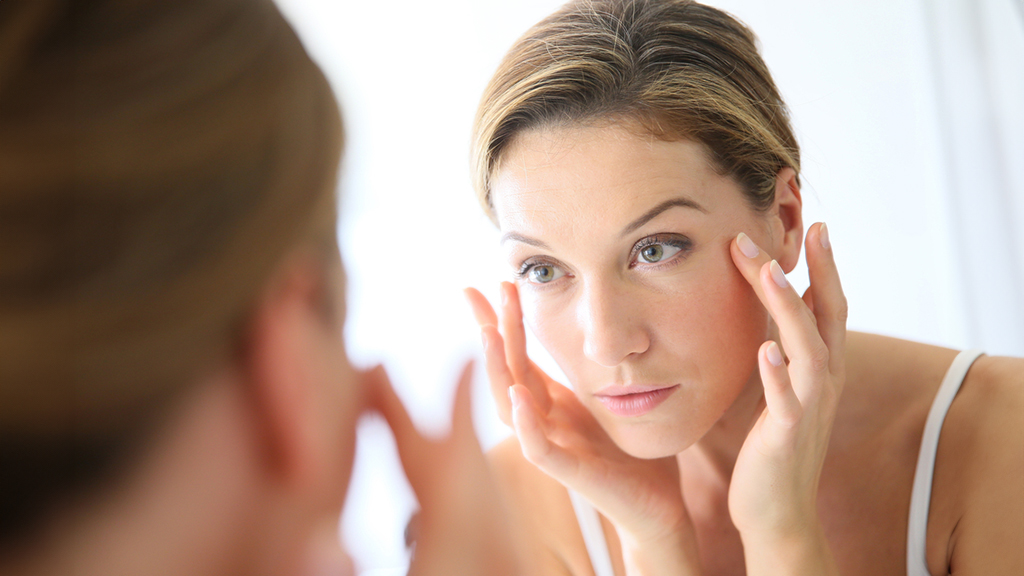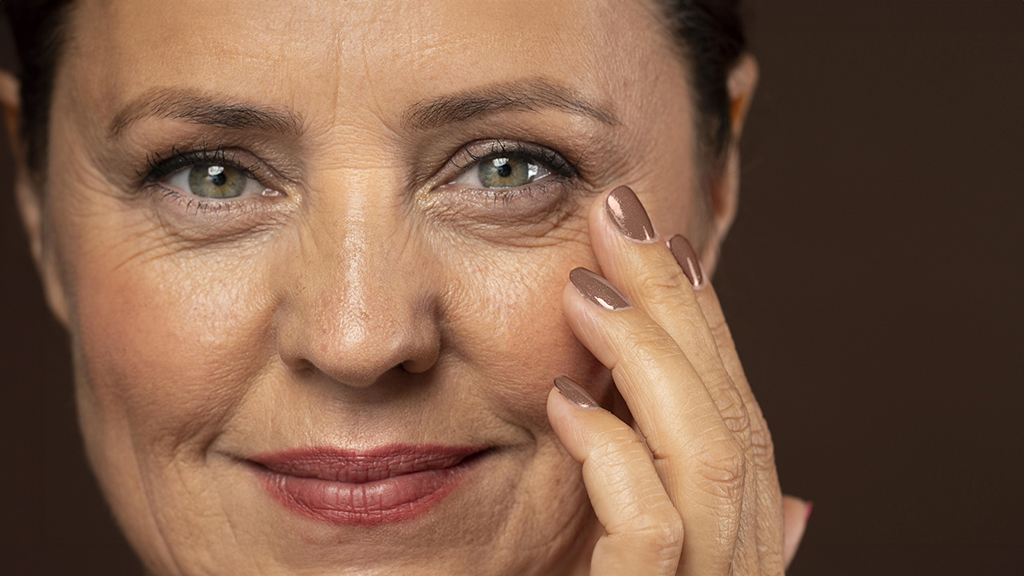Liposuction Fat Removal Surgery
Liposuction also known as Lipoplasty or fat removal surgery has been one of the most popular procedures in cosmetic surgery. It belongs to the group of body-contouring procedures, which also includes tummy tuck (abdominoplasty), skin-tightening procedures (arm, thigh and buttock lifts) and muscle enhancing procedures (calf, buttock and pectoral implants, and abdominal six-pack etching).
Liposuction is by far one of the most popular plastic surgery operations requested throughout the world, particularly so in the Middle East. Its technology constantly evolving up to the point we arrive at today with the introduction of a high tech combined Ultrasound Cavitation and Radio Frequency system, offering speed, effectiveness and safety with minimal down-time.
Modern liposuction methods are typically characterised by several advantages:
- They are better tolerated by patients and carry a much lower risk of complications
- Patients experience less pain and shorter post-operative down-time
- There is less blood loss and bruising
- They are less expensive due to the shorter operating time
- Surgeons can contour the body to any desirable angle, producing a more aesthetically appealing result.
The many advanced technologies now widely available include, what must seem to the patient, a bewildering array of techniques involving ultrasound, radio frequency (RF) and even laser, each with their own advantages and disadvantages and suitability in differing circumstances.
But before we explore Liposuction further, let’s take a brief look at the problem itself – FAT.
About Fat
Fat is an efficient way for our body to store energy. The basic unit of fatty tissue is the fat cell; technically known as an adipocyte. This simple form of cell consists of a (membrane) bag within which sits the nucleus of the cell surrounded by fat. Throughout our childhood and into early adolescence, we continue to develop more and more fat cells. However, by our late teens to mid-twenties it is believed that we stop making new fat cells.
So you may ask how do we still put on weight as we get older?
The answer, is unfortunately, very simple. We just increase the amount of fat stored in each of these fat cells. They simply balloon, sometimes to many thousands of times their original size.
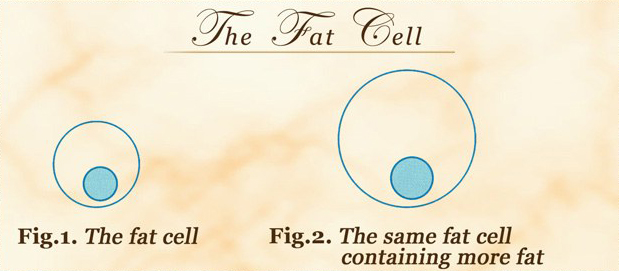
If we take a very simplistic view of an area of the body, then one might imagine the skin, with subcutaneous fat on the inside, with muscles and other structures underneath. As weight is put on, the fat cells increase in size, with the result that the area becomes generally larger. For a lot of people losing weight, toning up and achieving the figure they want requires a combination of healthy eating and regular exercise. However, certain individuals have collections of fat in specific anatomical areas and when these individuals put on weight, they feel that it has become localised to these areas and usually no amount of exercise or dieting can shift these stubborn fat pockets.
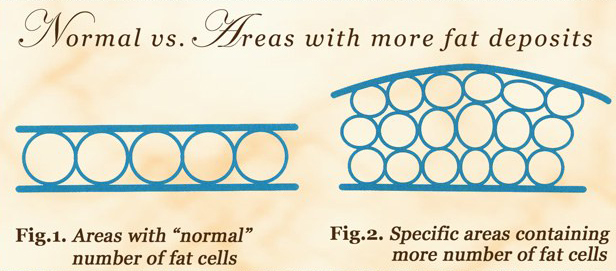
Typical problem areas that can be treated with liposuction surgery include:
- Chin / Neck
- Chest
- Arms
- Armpit & Bra area
- Flanks (Love handles) & Hips
- Upper and Lower Abdomen (or Stomach)
- Inner and Outer Thighs
- Knees
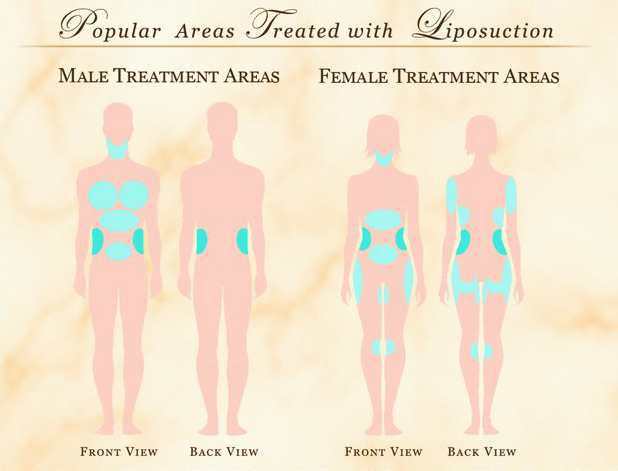
As weight is put on, the fat cells increase in size, with the result that the “problem area(s) becomes generally larger. Should weight be lost, then the weight tends to come off uniformly also, leaving the “problem” area(s), still larger than the rest of the body. In these instances, Liposuction may be the only solution to shape the contour of the body and bring it into proportion.
Combined Ultrasound & Radio Frequency (RF) Liposuction
In purely technical terms, the advanced Combined Ultrasound & RF Liposuction technology combines the benefits of Low Frequency Ultrasound Cavitation and Tumescent Liposuction with Mono-polar Radio Frequency. The former melts fat without any associated bleeding and swelling, whilst the RF waves of the latter effectively tighten the skin as the energy is transported through the various layers of tissue and stimulate the action of existing collagen.
Combined Ultrasound & RF Liposuction represents the most advanced development of the “cavitation” concept. Cavitation is a natural phenomenon using low frequency ultrasound to apply a strong pressure wave to fat cell membranes which they are unable to withstand and therefore disintegrate into a liquid state, resulting in a natural form of fat loss. However, unlike other cavitation-based systems, Combined Ultrasound & RF Liposuction treatment acts from “within”, generating ultrasonic waves along the entire length of its high tech cannula probe in addition to the tip. It is thus able to target even the most restricted areas that have up until now been inaccessible.
A second major benefit, is that radio frequency (RF) waves are simultaneously emitted from the full length of the cannula body, resulting in firming and tightening of the skin through increased collagen production.
The fat extraction in this procedure is similar to that of other Liposuction technologies in which fat is extracted mechanically through suction. However with the Combined Ultrasound & RF Liposuction, a key benefit to the patient is that, since the fat has already melted prior to extraction, the procedure is much less invasive, very quick and very safe.
Why do patients request liposuction?
Many of our patients have battled for many years to reduce localised deposits of fat and to improve the shape and tone of their body through exercise. For many of these problems, Liposuction is the only solution. However it is not an effective treatment for weight loss or obesity, and it is not an alternative to exercise and diet
What to consider at this stage
Before you see the surgeon, it is important to consider exactly what you are trying to achieve from your surgery. In particular, you must understand that Lipoplasty is most definitely not a treatment for weight loss or obesity.
The Importance of a thorough Consultation
The importance of the initial consultation cannot be overemphasised. At your consultation, Dr Allen Rezai will fully discuss every aspect of your aesthetic goals and address any concerns you may have. He places the utmost importance on providing his patients with all the information they need to make fully informed decisions, ensuring each one arrives at the outcome that’s best for them.
A thorough medical history and physical examination during the consultation usually reveals whether or not you are a good candidate for the procedure, and if so, what the best treatment option would be. Working together during your consultation, a bespoke surgical plan will be developed for you. Dr Rezai will explain in detail the treatment options available, the techniques that would be used, and any potential risks and complications you need to be made aware of. If you are a smoker, you should stop smoking at least 6 weeks prior to surgery and be prepared to wait at least 6 weeks after your surgery before you start again. This is to reduce the risk of complications.
Routine blood tests are required for all patients about 2 weeks prior to the surgery and, in most cases, a urine pregnancy test will also be performed at the hospital on the day of surgery. An ECG is also required for patients over 50 years of age.
A thorough physical examination during the consultation usually reveals the best procedures for each patient. The physical examination will determine the type of Liposuction suitable for you.
Working together during your consultation, a bespoke surgical plan will be developed for you. Dr Rezai will explain in detail the treatment options available, the techniques that would be used, and any potential risks and complications you need to be made aware of. Informational brochures and fact sheets explaining each procedure will be provided for your review. Dr Rezai will use his expertise and experience to guide you towards the best option, taking into account your anatomy, aesthetic goals and personal circumstances.
The procedure for liposuction surgery
- Liposuction surgery may be carried out under either local anaesthetic with sedation, or general anaesthetic.
- Small (5mm) incisions are made in the skin.
- Anaesthetic solution is injected throughout the area to be operated upon.
- The fat is aspirated through fine cannulae.
- The operation can take from 30 minutes to 3 hours or more depending upon on the volume of fat to be removed.
- Many patients return home the same day. Larger cases will require an overnight hospital stay.
- Patients wear post-surgery compression garment for several weeks.
- For those not engaged in physical work, expect to return to work within 4 to 10 days.
- Anticipate returning to normal physical exercise after 6 to 8 weeks.
At consultation, your surgeon will advise upon a highly personalised treatment plan.
Following the operation
As with all surgery, you must expect to feel bruised and sore. The treated areas are likely to be swollen. It will be necessary for you to wear a tight support garment for several weeks. Most patients are able to fully return to their normal activities within 3 to 4 weeks.
As with the great majority of surgical wounds, those related to lipoplasty will continue to heal for more than one year. It is important to remember that the ‘wounds’ in question relate to the whole area operated upon, and not only to the small areas where the incisions were made.
At Elite Plastic & Cosmetic Surgery Group, we will provide you with detailed post-surgery instructions to expedite your recovery. Should you develop any doubts or concerns following your treatment, however, they would encourage you to contact us straight away.
Risks & Complications
Cosmetic surgery is amongst the safest of medical procedures. However, patients must understand and accept that no surgical procedure is totally without risk.
For further information concerning the risks and complications associated with Liposuction, please refer to Risks and Complications of Liposuction.
At Consultation, your surgeon will discuss these risks with you.
How long will the results of your liposuction surgery last?
Liposuction can produce considerable benefits, and these benefits last exceptionally well. The result is permanent, since the removed fat cells will not regenerate. By maintaining a sensible weight, and preferably also by exercising, the patient will be helping to both maintain and even improve the result of their surgery.
For details about procedures and treatments or for a consultation, advice and prices from our Dubai clinic please call +971 4 431 2396 or use our online form.
